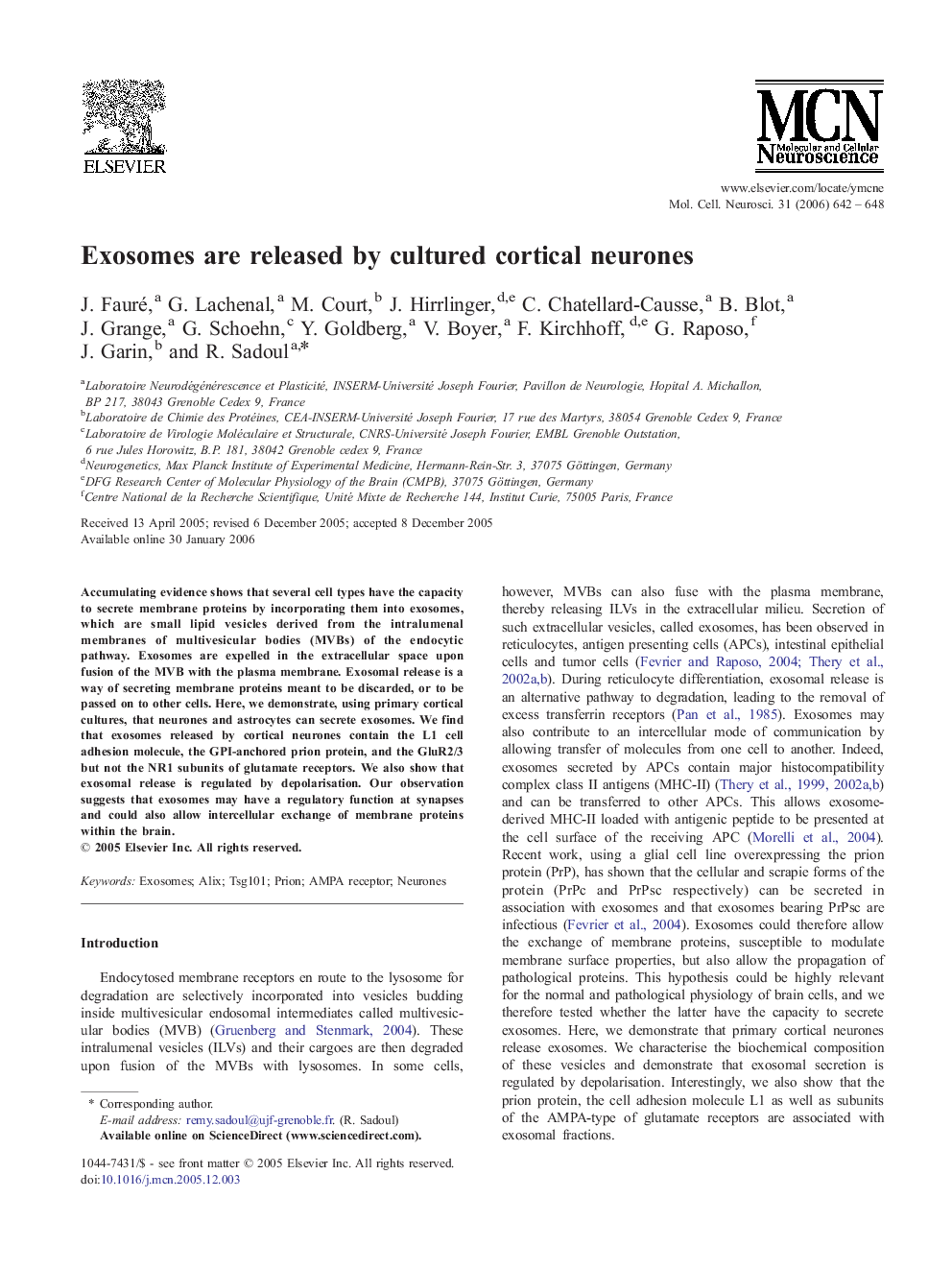| Article ID | Journal | Published Year | Pages | File Type |
|---|---|---|---|---|
| 2199483 | Molecular and Cellular Neuroscience | 2006 | 7 Pages |
Accumulating evidence shows that several cell types have the capacity to secrete membrane proteins by incorporating them into exosomes, which are small lipid vesicles derived from the intralumenal membranes of multivesicular bodies (MVBs) of the endocytic pathway. Exosomes are expelled in the extracellular space upon fusion of the MVB with the plasma membrane. Exosomal release is a way of secreting membrane proteins meant to be discarded, or to be passed on to other cells. Here, we demonstrate, using primary cortical cultures, that neurones and astrocytes can secrete exosomes. We find that exosomes released by cortical neurones contain the L1 cell adhesion molecule, the GPI-anchored prion protein, and the GluR2/3 but not the NR1 subunits of glutamate receptors. We also show that exosomal release is regulated by depolarisation. Our observation suggests that exosomes may have a regulatory function at synapses and could also allow intercellular exchange of membrane proteins within the brain.
